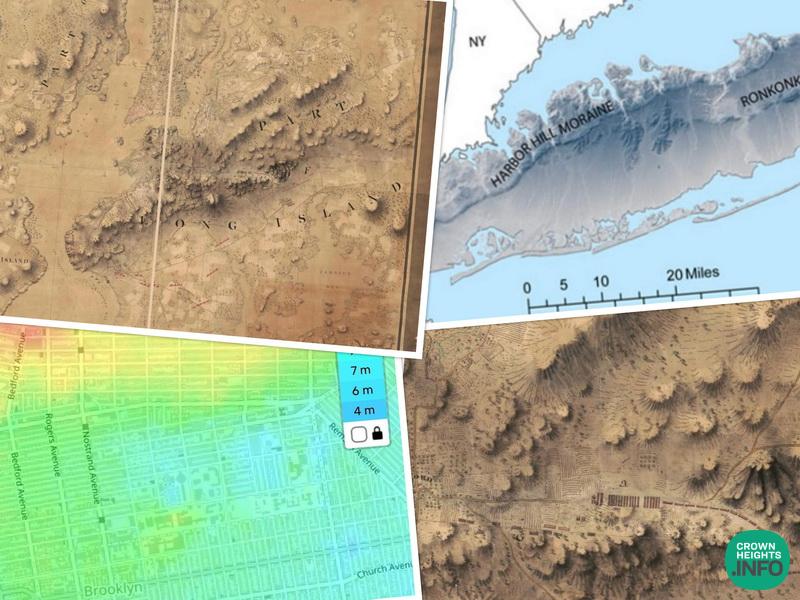
Crown Heights History: The Hills of Crown Heights
This series on Crown Heights History has been compiled by Instagram account @crownheightshistory, a born and raised Crown Heightser, and shows some of the ongoing research taking place.
Often times when you live in an area all your life you don’t notice certain things because you’re so used to them. For example, most people think that Eastern Parkway is the highest point in Crown Heights because it’s “The Parkway”, but the reality is that President Street is the highest point, and you actually walk down hill to Eastern Parkway.
Flooding in your basement can be especially frustrating, but at least understanding the topography of your neighborhood can explain to you where you live, and the history of how Crown Heights was developed.
Thank you to our dear reader for this contribution.
“Terminal Morrain and How It Rained.”
Crown Heights is part of what was historically called the Heights of Guan – a series of hills extending in a ridge along western Long Island beginning in Brooklyn. There are many hills along the Heights, with hills varying in height from 100 to 150 feet.
Geologically, the ridge is part of the Harbor Hill Moraine, which scientists believe was formed by a glacier many years ago. Due to its elevation, the Heights played a strategic part of the Battle of Brooklyn during the War of Independence in 1776.
This is also why the effects of storm and hurricane flooding are a lot less severe in Crown Heights (and other neighborhoods on the moraine) than in other parts of Brooklyn. The location of the moraine can be clearly seen in older maps of Brooklyn and in NYC’s flood zone maps.
This may be why the name Crown Heights was given. Earlier, it had also been given names that were associated with hills, as it was previously called Crow Hill and Bedford Hills. You can clearly see the elevation in the older maps.

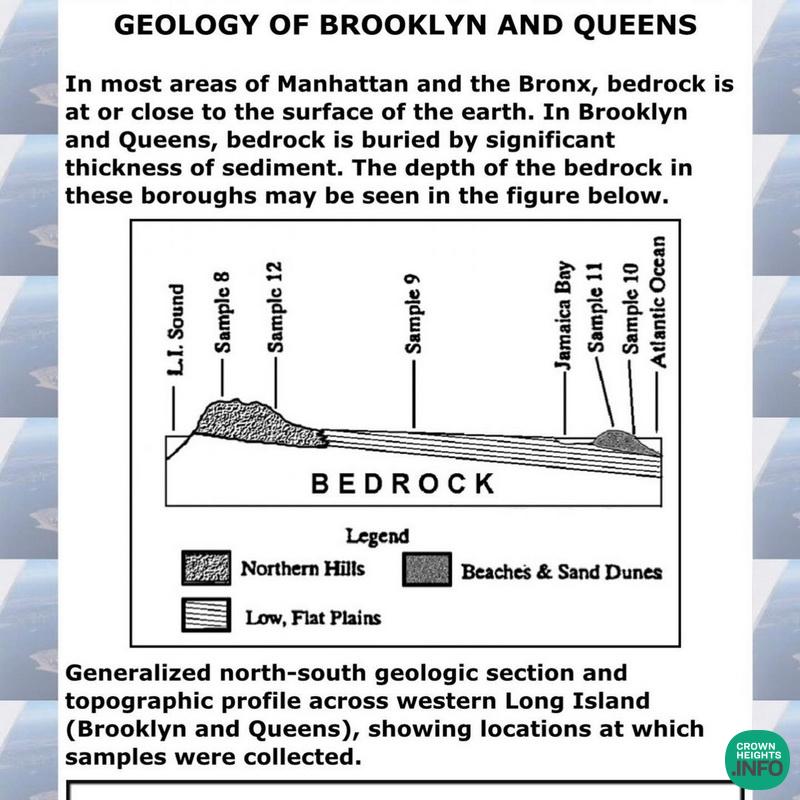
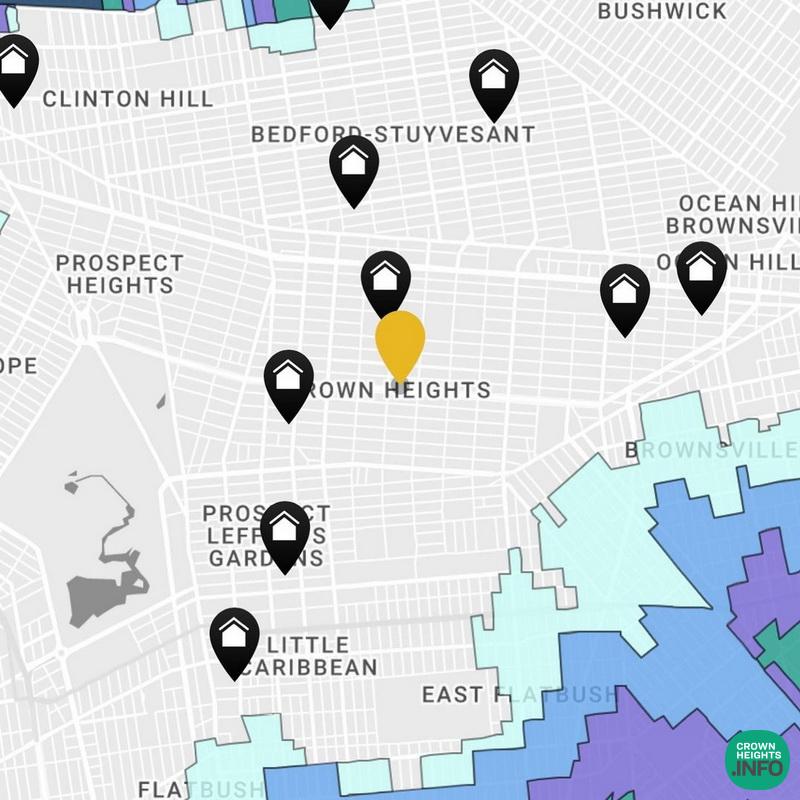

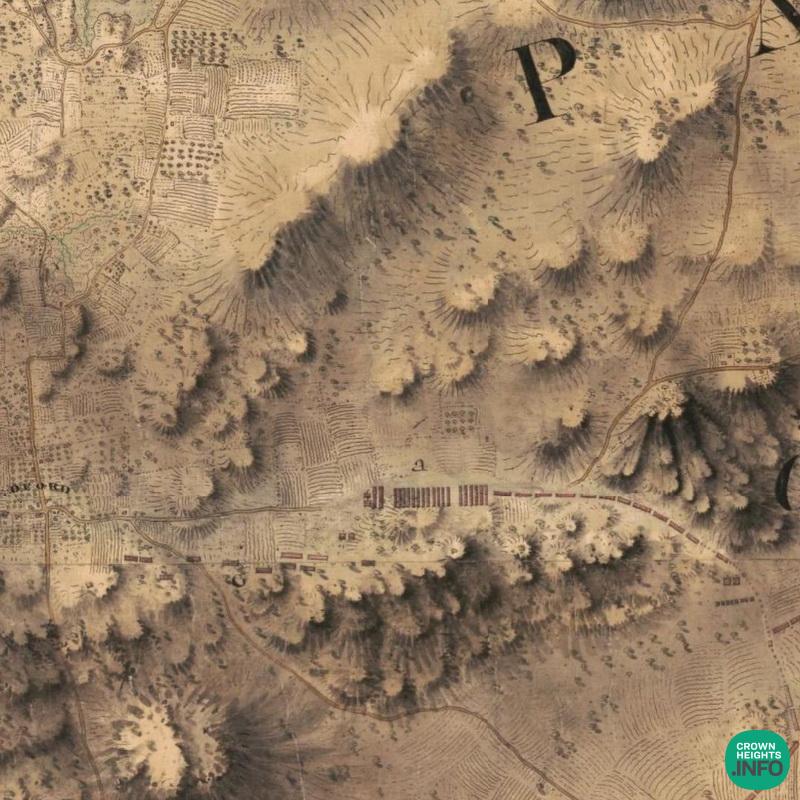



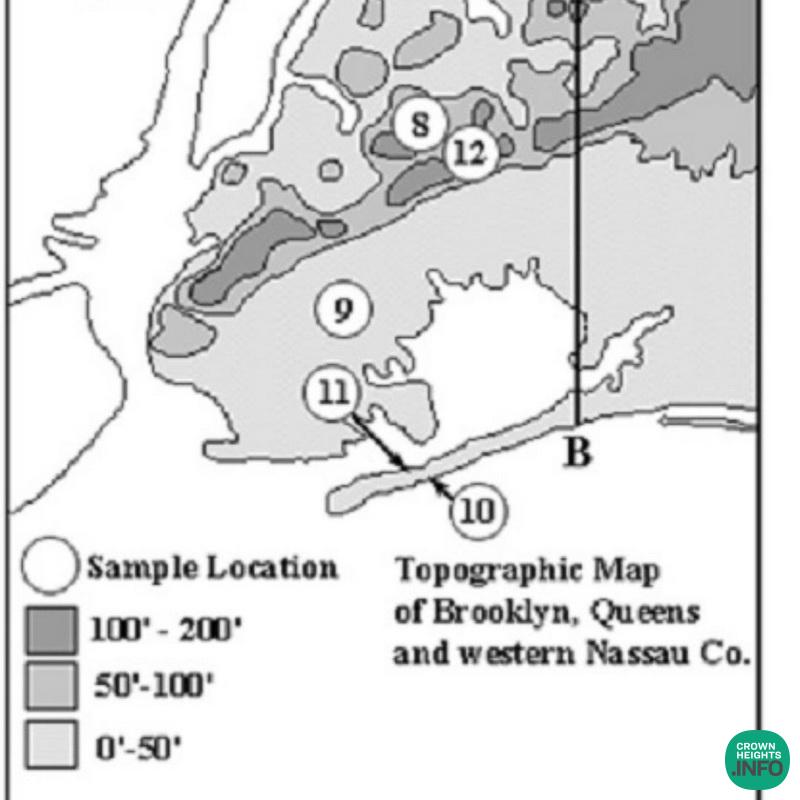
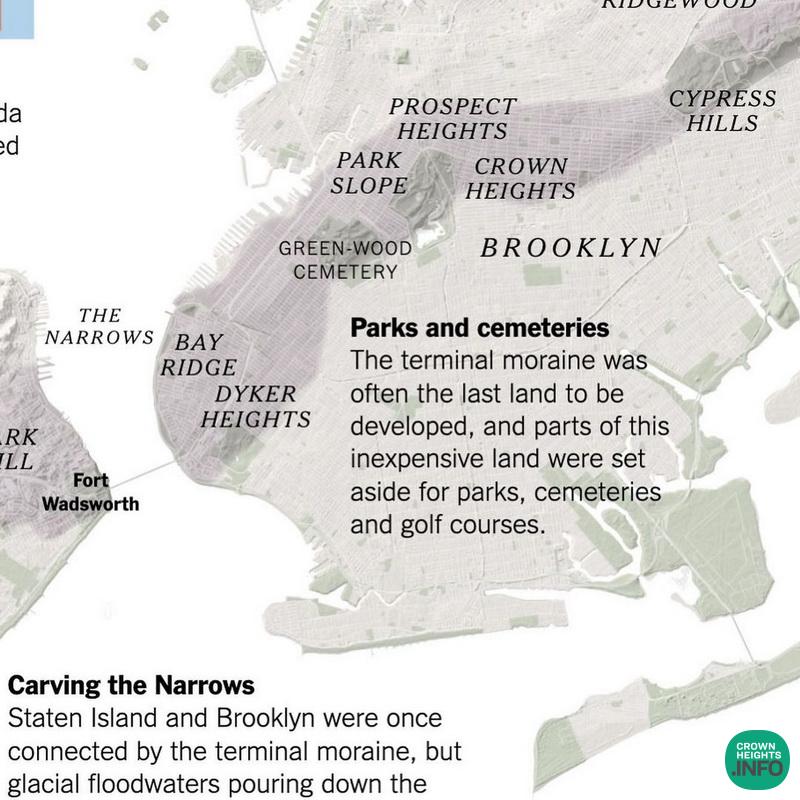
















David Ilan
You mentioned the glaciers happened “many years ago”. Wouldn’t it be more accurate to say during the numerous ice ages the most recent of which was 12,000 years ago, or might that be heretical to some people living in crown heights….?
History
Explaining geography. Number of years discussion is great for a boring radio show driving through North Carolina on Sunday with a fill-in host.
AH
So tell us, David, what makes your 12,000 years “more accurate”? Do you have an ancient inscription to that effect, or even an oral tradition handed down across the generations? Or is it just an assumption built on top of other assumptions?